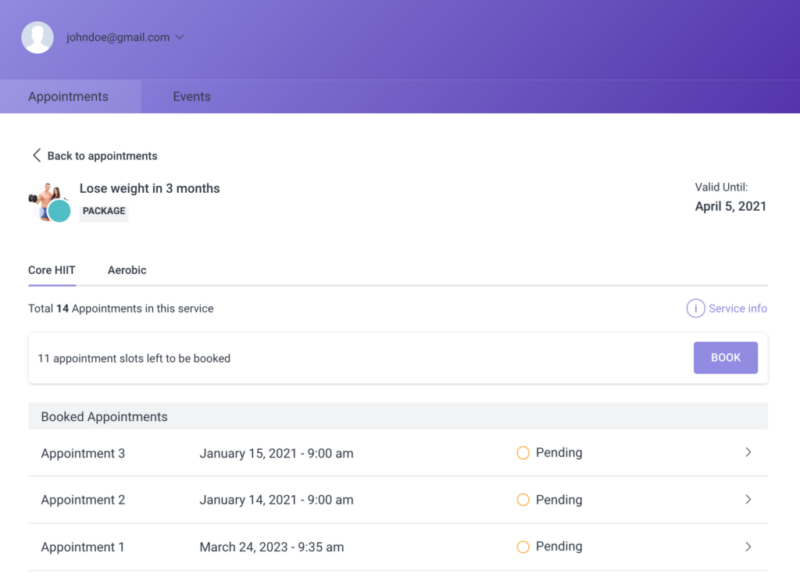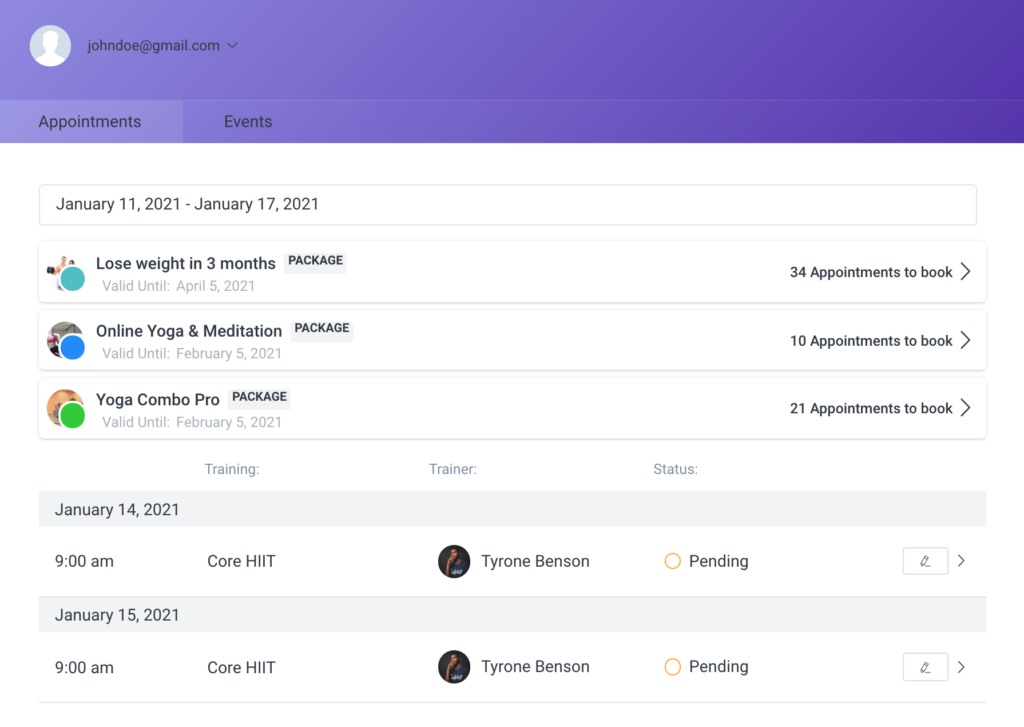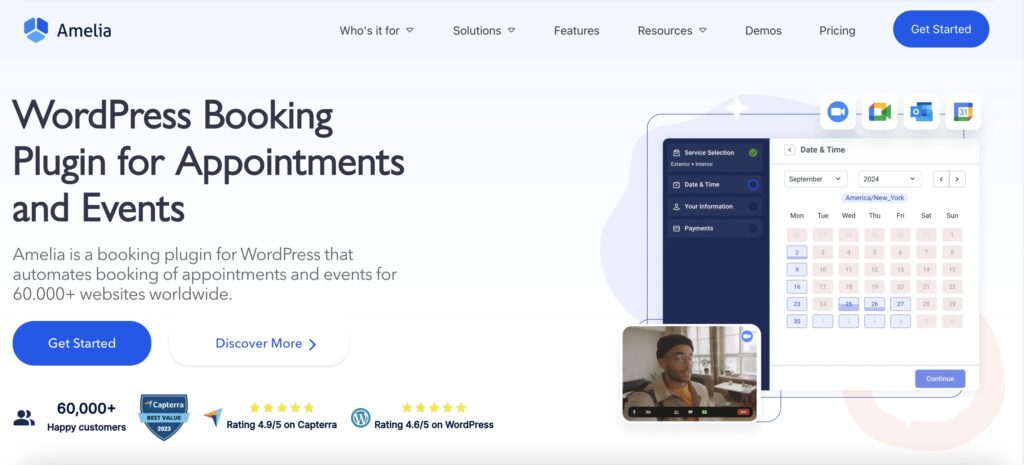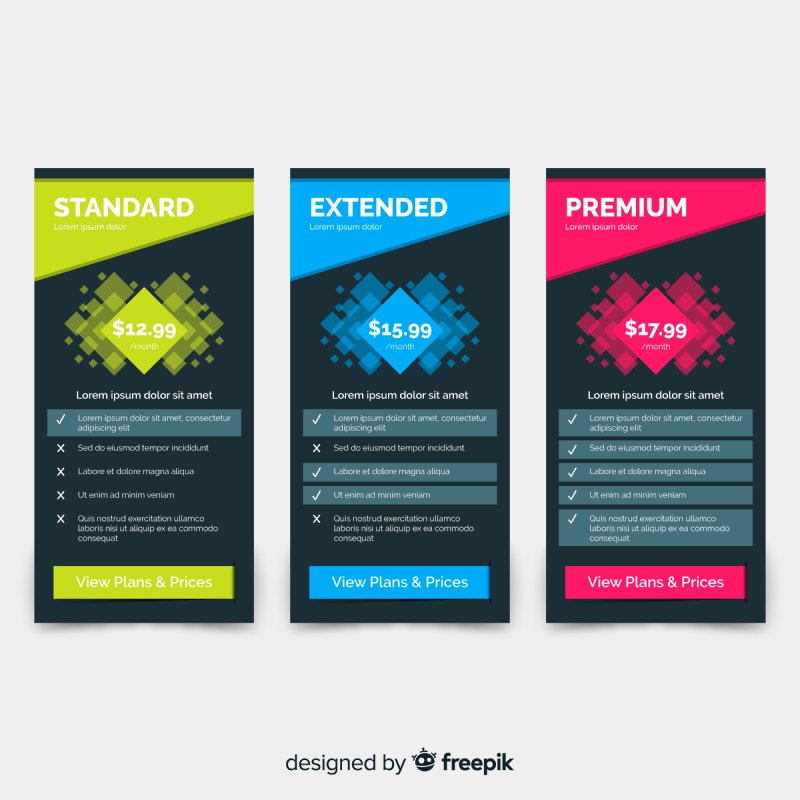Offering the right types of service packages is not just about meeting customer needs—it’s about exceeding them. They play an important role in defining the value proposition of your business, shaping customer experiences, and driving revenue growth.
However, there are many different types of service packages – from standard packages to subscription-based models and everything in between. How do you choose the right type for your business?
We’ll walk you through every detail of every type of service package. From understanding the nuances of different types of packages to identifying the best fit for your business, we equip you with the knowledge and insights needed to make informed decisions.
We also uncover the benefits, challenges, and best practices associated with each type.
So, let’s dive in and explore service packages together, unlocking new possibilities and opportunities for your business along the way.
Importance of Understanding Different Types of Service Packages
Service packages come in various forms, each designed to meet the different needs and preferences of both businesses and clients. Understanding the different types of service packages is crucial for several reasons:
Tailored solutions
By comprehending the range of service packages available, you will tailor your offerings to match the specific needs and preferences of your target audience. Whether it’s standard packages, customized options, or subscription-based models, knowing the benefits and details allows you strategic decision-making when designing your service packages.
Competitive advantage
In a competitive market, having a diverse portfolio of service packages can set your business apart from its competitors. Understanding the various types enables you to innovate and create unique offerings that resonate with customers, thereby gaining a competitive edge.
Customer satisfaction
Different customers have different needs and budgets. By offering a variety of service packages, you will cater to a broader range of clientele, ultimately leading to increased customer satisfaction. Understanding the types of packages ensures that your business can provide solutions that best match your customers’ requirements.
Profitability
Choosing the right service package model can significantly impact your bottom line and profitability. By understanding the pros and cons of each type, you will make informed decisions about pricing, resource scheduling, and revenue generation strategies. This knowledge helps optimize profitability while delivering value to customers.
Adaptability
Markets evolve, and so do customer preferences. Understanding the different types of service packages allows you to remain agile and adapt to changing market dynamics. Whether it’s shifting towards subscription-based models or introducing hybrid packages, equipped with this knowledge you can quickly respond to emerging trends.
Types of Service Packages
And now onto exploring the 7 main types of service packages:
- Standard service packages
- Customized service packages
- Tiered service packages
- Subscription-based service packages
- Value-based service packages
- Add-on service packages
- Hybrid service packages
Standard service packages

Standard service packages form the backbone of many businesses, offering predefined sets of services at fixed prices. These packages are designed to meet the needs of a broad audience and provide a clear and straightforward solution to common problems
They are pre-packaged offerings that include a set of services or features for a fixed price. These packages typically have well-defined scopes, deliverables, and pricing structures, making them easy for both businesses and customers to understand.
Standard service packages can be found across a wide range of industries, from salons offering bundled services to consulting firms providing standardized consulting packages based on service hours or deliverables.
Standard service packages simplify decision-making for customers, as they can easily compare different options based on features and prices. They also streamline operations for your business by standardizing service delivery processes and pricing structures.
While standard packages offer simplicity and predictability, they may not always meet the unique needs of every customer. Additionally, by offering only standard packages you may struggle to differentiate yourself from competitors who offer more customizable solutions.
How do you implement standard service packages?
- Clearly define the scope and deliverables of each standard package to avoid confusion.
- Price packages competitively based on market research and customer value perception.
- Regularly review and update packages to ensure they remain relevant and competitive.
Standard service packages serve as a foundation for you to build upon, providing a baseline offering that can be supplemented with additional services or customized further to meet specific customer needs. While they may not always be the most flexible option, they offer simplicity, clarity, and consistency for both businesses and customers alike.
Customized service packages
Customized service packages offer tailored solutions to meet the unique needs and preferences of individual clients. Unlike standard packages, which provide predefined sets of services at fixed prices, customized packages are designed to be flexible and adaptable to the specific requirements of each client.
Their main characteristics are:
Tailoring services to meet specific needs
Customized service packages are crafted based on a thorough understanding of the client’s objectives, challenges, and preferences. You work closely with clients to identify their unique requirements and tailor solutions that address their specific pain points.
Benefits for both service providers and clients
Offering customized packages allows you as a service provider to differentiate in the market by providing personalized solutions that meet the diverse needs of your clients. It also fosters stronger client relationships and can lead to increased customer loyalty and repeat business.
Flexibility
Customized service packages offer clients the flexibility to select only the services they need, avoiding unnecessary expenses on features or services that are not relevant to their business. This personalized approach ensures that clients receive maximum value from the services provided.
Example
You can implement customized service packages across various industries, including consulting, marketing, and IT services.
For example, a marketing agency may offer customized packages that include a mix of services such as social media management, content creation, and email marketing, tailored to the unique goals and target audience of each client.
Challenges and how to overcome them
- Scope creep
It’s essential to clearly define the scope of customized packages upfront to prevent scope creep and ensure that both parties have a clear understanding of what is included.
- Additional effort
Customized packages may require additional time and resources to develop and deliver compared to standard packages. Service providers should carefully consider resource allocation to ensure profitability while delivering value to clients.
Tiered service packages
Tiered service packages are structured offerings that provide customers with a range of options at different price points, each offering increasing levels of features, services, or benefits. These packages allow you to cater to a diverse range of customers with varying needs and budgets.
This type of service packages typically consists of multiple tiers or levels, with each tier offering a different combination of features, services, or benefits. The tiers are usually categorized as basic, standard, and premium, although the specific names and number of tiers may vary depending on the industry and business model.
Benefits of tiered service packages
- Tiered packages allow customers to choose the level of service that best fits their needs and budget, providing them with greater flexibility and control over their purchasing decisions.
- Tiered packages provide you with opportunities to upsell customers to higher-tier packages by offering additional features or benefits at a higher price point.
- Tiered packages enable you to segment your target market based on customers’ willingness to pay and the value they place on different features or services, allowing for more targeted marketing and pricing strategies.
Example
Tiered service packages can be found in various industries, including software and subscription-based services. For example, a software company often offers tiered subscription plans with different levels of functionality, such as basic, pro, and enterprise, to cater to individual users, small businesses, and large enterprises, respectively.
Best practices when implementing service packages
- Each tier should offer a clear and compelling value proposition to customers, with higher-tier packages providing additional features or benefits that justify the higher price.
- Pricing for tiered packages should be carefully calibrated to ensure that each tier offers sufficient value relative to its price, while also maximizing revenue and profitability for the business.
- Regularly solicit customer feedback to understand their needs and preferences, and use this information to refine and improve the tiered packages over time.
Tiered service packages provide you with a flexible and scalable approach to meet the diverse needs of customers. By offering multiple tiers with varying levels of features and benefits, you will attract a broader range of customers, increase revenue through upselling opportunities, and effectively segment your target market.
Subscription-based service packages
Subscription-based service packages are offerings where customers pay a recurring fee at regular intervals (e.g., monthly or annually) to access a set of services or benefits provided by a business.
This type of service packages has gained widespread popularity across various industries due to its convenience, predictability, and potential for long-term customer relationships.
- Subscription-based service packages provide customers with ongoing access to a set of services, products, or features in exchange for a recurring payment. Key features of this model include automatic renewal, flexibility to upgrade or downgrade plans, and often a free trial or introductory offer to attract new subscribers.
- Subscription-based models offer you a predictable and steady stream of revenue, which can improve cash flow and facilitate long-term financial planning. They also foster customer loyalty and retention, as subscribers are more likely to continue using the service over time.
- Subscription-based packages provide consumers with convenience and flexibility, allowing them to access services on an ongoing basis without the need for repeated transactions. They also often offer cost savings compared to one-time purchases, especially for services that are used frequently.
Successful subscription models in different industries
- Many SaaS companies offer subscription-based pricing for access to their cloud-based applications, providing customers with continuous updates, maintenance, and support.
- Platforms like Netflix, Spotify, and Amazon Prime offer subscription-based access to a vast library of content, including movies, music, and TV shows, for a monthly fee.
- Subscription-based meal delivery services like Blue Apron and HelloFresh provide customers with weekly meal kits tailored to their dietary preferences and cooking skill levels.
Strategies for building and maintaining subscriber base
- Clearly communicate the value proposition of the subscription service, highlighting the benefits and features that differentiate it from competitors.
- Provide a seamless and user-friendly experience for subscribers, from the sign-up process to ongoing usage and customer support.
- Implement strategies to reduce churn and retain subscribers, such as offering loyalty rewards, personalized recommendations, and proactive engagement.
Value-based service packages
Value-based service packages are offerings that are priced and structured based on the perceived value they deliver to customers rather than the cost of production or the time spent delivering the service.
This approach focuses on aligning the price of the package with the benefits and outcomes it provides to customers, resulting in a more equitable exchange for both parties. But before you implement this type of service package, you need to get clear on some things:
Understanding the value proposition
Value-based service packages center around the unique value proposition they offer to customers. This could include tangible benefits such as increased efficiency, cost savings, or revenue growth, as well as intangible benefits like peace of mind, convenience, or improved brand reputation.
Factors influencing pricing and packaging
Pricing for value-based packages is determined by factors such as the perceived value of the service to the customer, the competitive landscape, and the customer’s willingness to pay. Packaging involves bundling services in a way that maximizes perceived value while also aligning with the customer’s needs and preferences.
Case studies highlighting value-based packages
For instance, a marketing agency may offer a comprehensive digital marketing package priced based on the expected return on investment (ROI) for the client, rather than the cost of individual services.
Similarly, a consulting firm may structure its advisory services around specific business outcomes, such as increased sales or market share, and price its packages accordingly.
Best practices for communicating value to clients
- Clearly communicate the pricing and value proposition of the service packages to clients, emphasizing the benefits they can expect to receive.
- Provide clients with ROI calculations or case studies demonstrating the potential value they can expect to gain from investing in the service package.
- Tailor service packages to meet the specific needs and objectives of each client, ensuring that the value delivered aligns closely with their expectations.
Value-based service packages offer a win-win scenario for both service providers and clients.
By pricing services based on the value you deliver, you can capture a fair share of the value created while also ensuring that clients receive a positive return on their investment. This approach fosters trust, transparency, and long-term relationships with clients, ultimately driving mutual success and satisfaction.
Add-on service packages
Add-on service packages are supplemental offerings that you can provide in addition to your core services to enhance the value proposition for customers and increase revenue. These types of service packages allow customers to customize their experience by selecting additional services or features that meet their specific needs.
Add-on service packages are designed to complement the core offerings of a business by providing additional value-added services or features. These may include premium support, extended warranties, expedited delivery, or specialized training, depending on the nature of the business and the preferences of the target audience.
Examples of add-on options
Add-on service packages can vary widely depending on the industry and the nature of the core services offered. For example:
- A consulting firm may offer add-on services such as additional hours of consulting, specialized market research reports, or access to exclusive events or resources.
- A salon can offer extra services for haircuts such as hair treatment.
- A yoga studio can offer additional classes for faster improvement.
Maximizing profitability with add-ons
Add-on service packages can be a lucrative revenue stream for you, as they allow for upselling or cross-selling opportunities beyond the initial sale. By offering complementary services that address specific pain points or enhance the customer experience, you can increase their average transaction value and profitability.
How to integrate add-ons into service offerings
- Conduct market research and gather feedback from customers to identify potential add-on services that would provide value and meet their needs.
- Bundle add-on services in a way that enhances the overall value proposition for customers while also maximizing profitability for the business.
- Clearly communicate the availability and benefits of add-on services to customers through marketing channels such as website, email, and sales collateral.
Add-on service packages offer you a strategic way to differentiate yourself in the market, increase customer satisfaction, and drive incremental revenue. By providing customers with the flexibility to customize their experience and choose additional services that meet their specific needs, you can create value and build stronger relationships with your clientele.
Hybrid service packages
Hybrid service packages combine elements from different types of service offerings to provide customers with a comprehensive and tailored solution that meets a variety of needs. By blending different service models, you will leverage the strengths of each approach to create unique and competitive offerings.
Hybrid service packages integrate elements from standard, customized, subscription-based, and other service models to create offerings that are flexible, scalable, and highly tailored to the needs of individual customers or market segments.
Case studies of successful hybrid models
Examples of hybrid service packages can be found across various industries, demonstrating the versatility and effectiveness of this approach. For instance:
- A software company may offer a hybrid package that combines a subscription-based pricing model with customized add-on services tailored to the unique requirements of each client.
- A marketing agency may offer a hybrid package that includes a subscription-based retainer for ongoing services like social media management, combined with customized project-based services for specific campaigns or initiatives.
Considerations for developing hybrid packages
- Identify different customer segments and their unique needs, preferences, and willingness to pay to inform the development of hybrid packages.
- Ensure that the hybrid package offers a clear and compelling value proposition to customers by combining elements that address their specific pain points and deliver tangible benefits.
- Develop processes and systems to support the delivery of hybrid packages effectively, including pricing, billing, and service fulfillment.
While hybrid service packages offer numerous benefits, they also present challenges related to complexity, pricing, and communication. You have to must navigate these challenges by:
- Streamlining the offering and communication of hybrid packages to avoid overwhelming customers with too many options or features.
- Clearly communicating the pricing structure and value proposition of hybrid packages to customers to ensure transparency and build trust.
- Developing targeted marketing strategies to promote hybrid packages and educate customers about the benefits of the integrated approach.
Hybrid service packages provide you with a versatile and adaptable approach to meeting the diverse needs of customers. By combining elements from different service models, you can create offerings that are highly customized, scalable, and competitive in the market, ultimately driving value for both customers and the business.
How to Choose The Best Service Package Type for Your Business?
Choosing the right service package type is crucial for businesses to effectively meet customer needs, drive revenue, and maintain competitiveness in the market.
Understand your target audience
Start by gaining a deep understanding of your target audience, including their demographics, preferences, pain points, and buying behaviors. This insight will help you tailor your service packages to meet their specific needs and preferences.
Evaluate market trends and competitors
Research market trends and analyze your competitors’ offerings to identify gaps, opportunities, and areas for differentiation. Understanding what types of service packages are popular in your industry can help inform your decision-making process.
Assess your core competencies and resources
Evaluate your business’s core competencies, resources, and capabilities to determine which types of service packages align best with your strengths and capacity for delivery. Consider factors such as expertise, technology, and scalability.
Define your value proposition
Clearly articulate your value proposition and unique selling points to differentiate your service packages from competitors. Focus on what sets your offerings apart and the specific benefits they provide to customers.
Consider customer preferences and buying behavior
Take into account how your customers prefer to consume services and make purchasing decisions. For example, if your target audience values flexibility and customization, offering customized or hybrid service packages may be more appealing.
Balance flexibility and standardization
Strike a balance between offering flexibility to accommodate individual customer needs and standardization to streamline operations and ensure consistency in service delivery. This balance will vary depending on your business model and industry.
Test and iterate
Don’t be afraid to experiment with different types of service packages and pricing strategies to see what resonates most with your target audience. Gather feedback from customers and iterate on your offerings based on their preferences and pain points.
Monitor performance and adapt accordingly
Continuously monitor the performance of your service packages, including sales metrics, customer feedback, and profitability. Use this data to identify areas for improvement and make adjustments to your offerings as needed.



